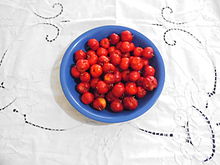
By:Manish
Date:2023-09-01
Arduino: A Gateway to Creative Electronics Exploration
Arduino, a household name in the world of electronics, offers beginners an exciting gateway into the realm of creative tinkering and innovation. Whether you're an aspiring engineer, a curious hobbyist, or a tech enthusiast, Arduino's user-friendly platform empowers you to bring your ideas to life through hands-on experimentation.
What is Arduino?
Arduino is an open-source electronics platform that consists of both hardware and software components. The heart of an Arduino system is a microcontroller board, typically built around the ATmega series microcontrollers. This board acts as the brain of your project, executing instructions to control various components like LEDs, sensors, motors, and more.
Getting Started: The Basics
For beginners, the first step is choosing the right Arduino board. The most popular choice is the Arduino Uno, known for its simplicity and versatility. Once you have your board, you'll need to install the Arduino Integrated Development Environment (IDE) on your computer. This software enables you to write, compile, and upload code to the Arduino board.
Coding Made Easy
Arduino programming is based on the C/C++ programming language, but don't let that intimidate you. The Arduino IDE provides a simplified and beginner-friendly code editor with pre-built functions, making it easier to grasp the basics. A typical Arduino sketch (program) consists of two main functions: "setup()"
and ""loop()". The "setup()" function is where you initialize variables, set up pins, and configure your board. The "loop()" function, as the name suggests, runs in a loop and contains the main logic of your program.
Blinking an LED: Your First Project
A classic beginner's project is creating an LED blink pattern. This project helps you understand how to set up hardware components, write basic code, and upload it to the Arduino board. By connecting an LED to a digital pin and alternating its state with delays, you can create a blinking effect. This simple project lays the foundation for more complex experiments.
Expanding Horizons with Sensors and Actuators
As you become more comfortable with Arduino basics, you can delve into using sensors to collect data from the environment. Sensors like temperature, light, and motion detectors can be connected to your board, allowing you to create projects such as automatic lighting systems or weather stations. Actuators like servos and motors enable you to build projects involving movement, such as robotic arms or automated vehicles.
Community and Resources
One of the most remarkable aspects of the Arduino community is its vast pool of resources. Online forums, tutorials, and documentation provide endless support for beginners. If you encounter challenges, chances are someone else has faced the same issues and found solutions. Sharing projects, seeking advice, and learning from fellow Arduino enthusiasts is an integral part of the experience.
Taking It Further: Advanced Projects
Once you've gained confidence in using Arduino, you can challenge yourself with more advanced projects. Building a remote-controlled car, creating a home automation system, or developing a smart wearable device are just a few examples of the exciting possibilities. These projects may require a deeper understanding of electronics, coding techniques, and the integration of multiple components.
In Conclusion
Arduino's simplicity, coupled with its limitless potential for innovation, makes it an ideal starting point for beginners in electronics and programming. By mastering the basics of hardware connections, coding, and experimenting with various components, you'll embark on a journey that nurtures your creativity and problem-solving skills. With a strong online community and abundant resources, the world of Arduino welcomes you to explore, learn, and create to your heart's content. So, pick up an Arduino board, fire up the IDE, and let your imagination come to life through the magic of electronics.
